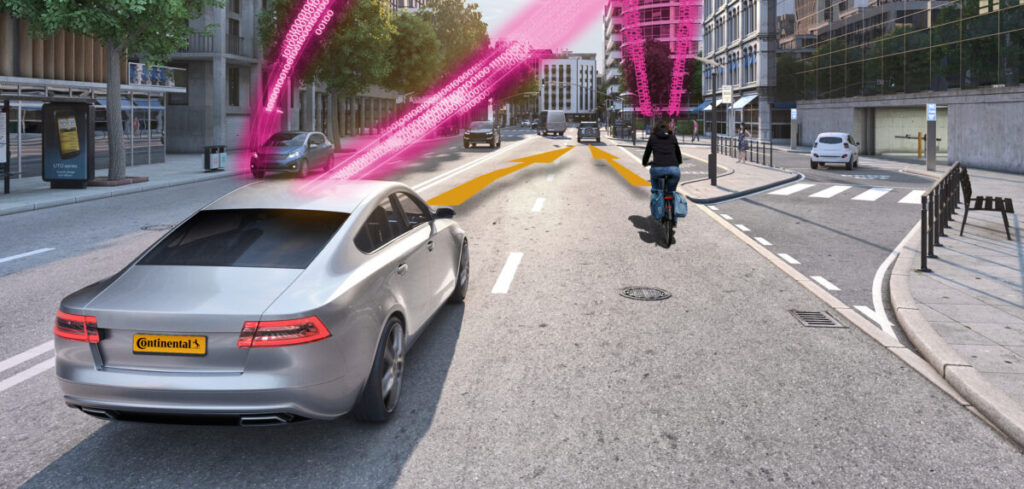Continental and Deutsche Telekom say they have developed a system that warns of potential accidents between connected vehicles and cyclists – or other vulnerable road users such as pedelec riders, scooter riders and pedestrians. The solution calculates the paths taken by cars and bicycles. If they are likely to cross at the same time, the system warns both road users via mobile communications in real time. According to the companies, initial road tests have been successful.
“Vulnerable road users, in particular, are often overlooked in road traffic. What’s more, according to the European Road Safety Council, more than 80% of accidents between pedestrians or cyclists and motorized vehicles end fatally for the vulnerable road users. Thanks to real-time networking and collision warning, we therefore give cyclists or pedestrians more visibility. In this way, we reduce serious accidents, injuries and traffic fatalities,” said Karsten Michels, head of research and advanced development at Continental.
“With collision warning, we are equipping cyclists, pedelec and scooter riders with a digital guardian angel,” added Oliver Bahns, responsible for connected mobility at T-Systems, a Deutsche Telekom subsidiary. “The key to this is the high level of connectivity: around 85% of the population in Europe uses a smartphone. And more and more cars are connected, too. With our computers in the mobile network, we also ensure extremely short response times.”
The collision warning system is based on satellite positioning (GPS), acceleration sensors, mobile communications and cloud computing. The car transmits its position and acceleration values to the cloud via mobile communications. The cyclist also sends this information to the cloud via smartphone. The system calculates the paths for the next five seconds and sends a warning to the car and the cyclist’s end-user device if a collision is imminent. To ensure that this information reaches both road users as quickly as possible, the system leverages multi-access edge computing.


